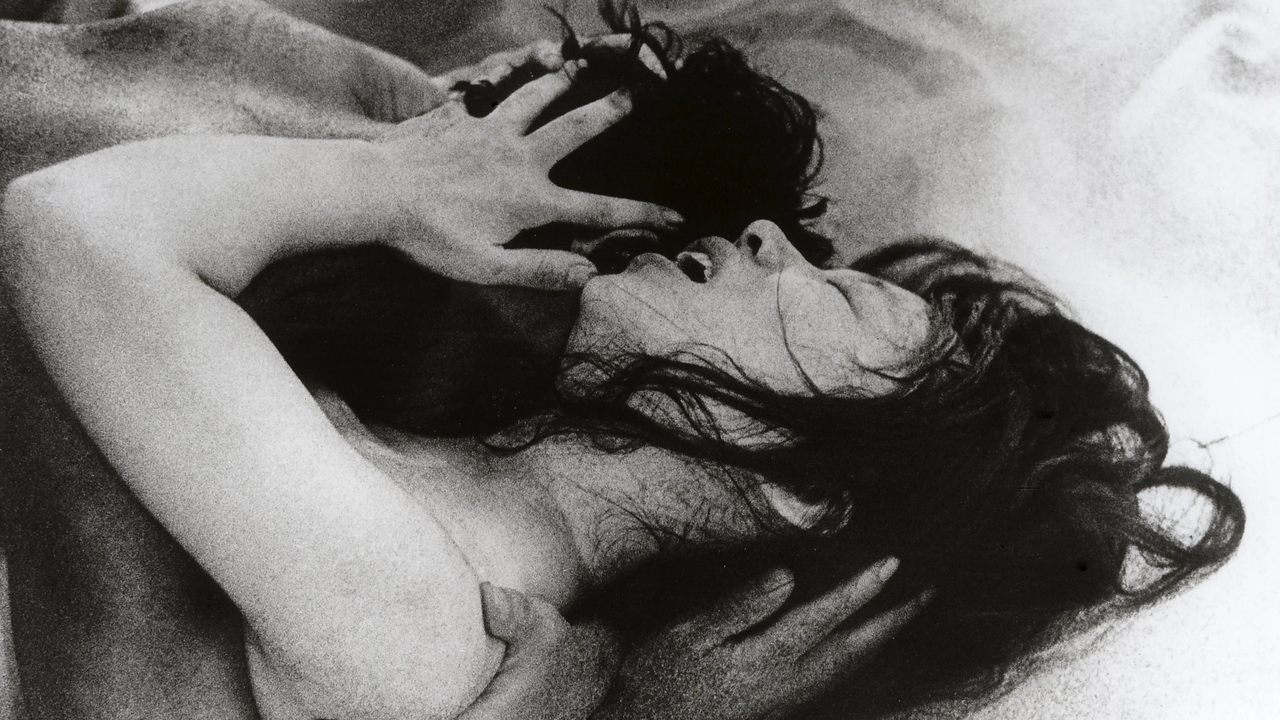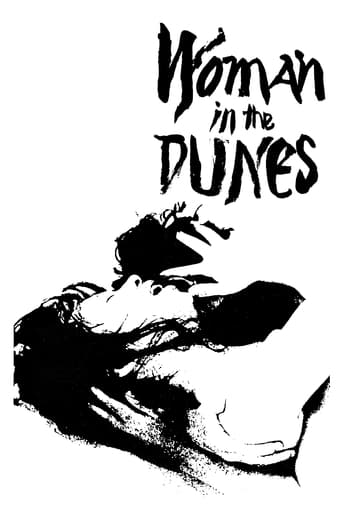NekoHomey
Purely Joyful Movie!
ThedevilChoose
When a movie has you begging for it to end not even half way through it's pure crap. We've all seen this movie and this characters millions of times, nothing new in it. Don't waste your time.
Anoushka Slater
While it doesn't offer any answers, it both thrills and makes you think.
Darin
One of the film's great tricks is that, for a time, you think it will go down a rabbit hole of unrealistic glorification.
PimpinAinttEasy
Dear Hiroshi Teshigahara, Woman in the Dunes was awash with this uniquely hypnotic and claustrophobic aura. The film can be enjoyed for the visual experience alone. The first few scenes with the man walking across the desert was enough to hook me in completely. Toru Takemitsu's dissonant score is used throughout the film to create this paranoid and horrifying atmosphere. I wish you had used a more traditional score. The main narrative is interwoven with visuals of sand trickling down and mountains crumbling which creates a really eerie effect. The interactions between the man and the woman inside the closed space of the hut reminded me of this quote by Christopher Isherwood from his novel The Single Man: "Think of two people, living together day after day, year after year, in this small space, standing elbow to elbow cooking at the same small stove, squeezing past each other on the narrow stairs, shaving in front of the same small bathroom mirror, constantly jogging, jostling, bumping against each other's bodies by mistake or on purpose, sensually, aggressively, awkwardly, impatiently, in rage or in love – think what deep though invisible tracks they must leave, everywhere, behind them!"The close ups of their bodies and the shots from behind the naked body of the woman were used to emphasize the intimate and erotic nature of their relationship. The outdoor scenes, especially the ones in the pitch dark of the night were haunting. Some writers of noir flicks could conjure up some interesting ideas based on those visuals. Best Regards, Pimpin. (8/10)
VensDrum
I'd like to emphasize one thing about this masterpiece that "critics" here seem to forget; it's the fact that this is one of the three or four movies in history that was adapted from the book in a way you can only dream of - fully consistent with the written story and with use of crucial dialogs same as in the book (not changing a word in most cases). I've read the book first and it obviously awe me. Then I went to see if there was a movie made - it seemed impossible for me to transfer this Kafka sand-driven story into film. And funny enough, after initial shock that the film has actually been made, I saw that it was a Japanese director who adapted a Japanese book and my expectations about the picture suddenly raised (thinking "well if a Japanese filmmaker who understands Japanese and world culture far better than the rest of the world does, film might be watchable.") Then I saw the movie. And than I watched it again. But this is not the main reason why I decided to post my comment; other comments will tell you all you need to know about this glorifying piece of cinema. I just want to stress out how good this superb adaptation of a book is with a following question: How many times you've read a book, picture the story in your head, then watched the movie being made after the book, and found out that the scenes in your head perfectly match with the scenes in the movie? Most answers would probably be: never.If you only watched the movie, dig up this superior Kobo Abe book, and see for yourself - in reverse direction - what director has really achieved here.
Artimidor Federkiel
Early on in Hiroshi Teshigahara's "Woman in the Dunes" we see entomologist Niki Jumpei lying in a broken boat which is entirely covered by sand. He looks forlorn there in the desert, lost on his search for new specimens of beetles that would bring him forward in life, or so he hopes. But what's for sure is only that he'll miss the last bus home. Niki looks stranded, physically and metaphorically. And yet, among the dunes, he has visions of the past - of a woman, of a relationship that went awry, now covered by the sands of time. Maybe nobody tried to uncover what has always been there between these two, maybe it's in the nature of things that everything will eventually be covered by dust and just has to be accepted the way it is. Later in the film we would see Niki dream of the sea, symbol of his freedom, of escape, of leaving the dunes behind forever. Ah, how he would long for the sea! But will he ever reach it? Because the time has come for a haunting reevaluation of life and the relationship with a woman - in a prison made of sand...Teshigahara's film, based on Kôbô Abe's novel and screenplay, is a realistic story, however parable and philosophical exposition of the human condition at the same time. It's rare that a picture can be read multiple ways without losing its power when seen from different angles, but Teshigahara's film meets this criterion with ease. As minimalistic as its basic idea might sound, it literally entraps its viewer in its claustrophobic environment, consisting of just two people, and sand, sand, sand, the puzzle of human existence buried with it, hopelessness written all over it. In his philosophical essay "Le Mythe de Sisyphe" existentialist Albert Camus concludes that one must imagine Sisyphus to be happy. Sisyphus, the man condemned by the Gods to roll up a rock on top of a mountain, watch it roll down again and start over, again and again. Sisyphus, a happy man? A contradiction? Not really. Man needs to find reasons to justify his own existence in the absurdity that surrounds him, Camus would argue. One of the reasons might be found in Teshigahara's masterpiece: There's someone who shares Sisyphus' predicament: the one suffering on his side, also known as "The Woman in the Dunes".
MauveMouse
Suna no onna is a splendidly profound minimalistic odyssey, a spiralling journey towards the core of oneself, towards an inner paradise, the ultimate Eden-oasis (suggested by the discovery of a new water source, and implicitly a new life, in the depths of the dunes); the ending is not a capitulation, it is finding the right balance and a path to be at peace and free, freedom that comes from within; the constraints, first those of the urbanistic web with its bureaucratic chains from which Niki Jumpei tries to escape through surrogate passions (entomology, photography) and then the natural ones, with the dunes acting like a hungry ghost's mouth wanting to devour its inhabitants, haunt our Ulysses on his inner sea peregrination, luring him with the woman, like a siren with her spectral body floating between the wavy dunes, and finally force him to face himself and ultimately to make a choice and gain a meaning of his life, paradoxically, beyond any pressure and coercion; the score is gorgeous and abrasive as the sand of the desert, working in perfect harmony with the both dreamy and sharp geometry of the images

